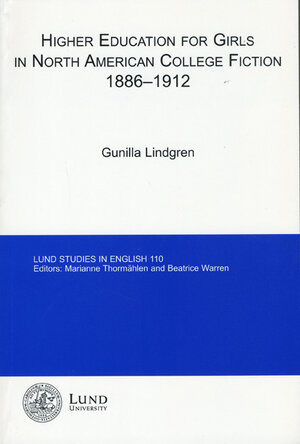Serie
Gunilla Lindgren
Higher Education for Girls in North American College Fiction 1886-1912
Lund Studies in English 110
2005
| 294 s.
|
engelska
ISSN: 0076-1451
ISBN: 91-974023-9-7
Ämnesord: kvinnliga studerande i litteraturen | högskolan i litteraturen | kvinnliga studerande | högskolan | historia | förenta staterna | 1880-talet | 1890-talet | sekelskiftet 1900 | amerikansk litteratur
Twenty years after Vassar College welcomed the first American female undergraduates in 1865, the experiences of women college students began to be fictionalized in so-called college stories. This study shows how higher education is presented in these novels and short stories, published during the dynamic period – from the 1880s to the 1910s – in which women's colleges gradually gained acceptance.
Two dimensions are of fundamental importance. The first has to do with contemporaneous opinions as to what constituted appropriate behaviour and work for young women. These are issues very much to the fore in the college stories, in which college is often seen to succeed where the home has somehow failed.
The other dimension concerns individual character development and is manifest in matters pertaining to academic education, campus life activities, and the ways in which college girls are seen to mature by means of their instruction, assignments, occupations, and interaction with their peers.
While men's college stories also come in for some attention, Lord Alfred Tennyson's narrative poem The Princess is used as a reference throughout this study. It contains ideas for and against higher education for women articulated at a time when no such academic institution for women existed in the Anglo-Saxon world. In Daddy-Long-Legs and its sequel Dear Enemy, Jean Webster created a balance between the contradictory ideas that Tennyson had addressed - a balance that is not seen in any of the earlier stories.

